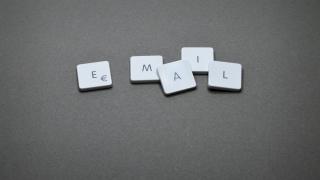
Ahh, first impressions - everyone’s got at least one or two that they wish they could do over. But where sales is concerned, the stakes are inevitably higher. Failing to make a good first impression can result in missed business opportunities, making it all-too important to nail your introductory email.
Introductory emails can take various forms depending on whether you’ve spoken to the prospect beforehand. For instance, you might have had a brief conversation via telephone and agreed to send an email with further information on your company. Other times – especially as a Qimtek member – you’ll be invited to quote for a job straight away, with no prior contact. Either way, your introductory email should always follow a few rules in order to generate the desired results:
Keep It Clean!
Any introductory sales email should have a clean format that doesn’t confuse or overwhelm the prospect. Chances are that your email will not be read unless you make it easy for the buyer to do so! Don’t write out paragraphs upon paragraphs of information – instead, make your email concise and professional, favouring aesthetically-pleasing formats such as bullet points.
Before composing your introductory email, you should take the time to understand the key features and benefits of using your services, as well as any unique selling points you can mention to the buyer. A comprehensive company history is probably not going to be well-received – instead, ask yourself what is need-to-know and what the buyer will be interested in.
Don’t Forget Common Courtesies:
Small details such as thanking the buyer for their time can go a long way towards building a successful business relationship. Personally, I always feel much more inclined to respond to an email if the sender is polite and maintains a friendly - but professional - tone. The aim of the email is always to get a response, be it a request for quote, a telephone call, or a meeting, meaning that common courtesies are absolutely essential.
Get to the Point:
Your introductory email should get to the point within four or five lines. There’s nothing more off-putting to a prospect than a rambling sales email full of clichés, which fails to succinctly deliver its message. If you don’t offer the buyer tangible information about your company then there’s only one place that your email is going – and that’s straight into the trash folder.
It’s always worth spending a few minutes editing your email before pressing send and it’s preferable that you’re brutal. Anything that doesn’t read well, or have a point to it, should definitely be removed.
Remember Your Attachments:
One way to cut down the bulk of your email is by including additional information as attachments. For instance, any approvals your company holds can be referenced in the body of the email, but it might also be a nice touch to include a copy of the actual certificate as an attachment. Not only does this give you credibility, but it also demonstrates a level of forward-thinking and professionalism, whilst keeping the format of the email clean.
The same can also be said for quotations. If you’ve been invited to quote for a job right from the word ‘go’, then your quotation should always be included as an attachment – these shouldn’t replace the cover email, but supplement it. If a buyer isn’t familiar with your services, then you cannot expect them to place an order on price alone, which is why an introductory email is crucial to highlight what you can offer.
Spend Time on Your Signature:
Your email signature should look professional and – at the very least – include your name, company address, job title and contact number. The buyer should be able to identify you as their personal point of contact and understand exactly how they can get in touch with you. Email signatures are also largely underutilised – when correctly composed, they can act as valuable marketing tools. For instance, if you’re exhibiting at an upcoming show, you can advertise your presence within your signature and even include your stand number. The same can be said for any social media accounts that your company has – by including the applicable links within your signature, you can be sure to grow your follower base steadily.
Always Include Call-to-Actions:
As I previously mentioned, the aim of your introductory email is to get a response. You can make this a lot easier for yourself by including a call-to-action. For those who are unfamiliar with this term, a call-to-action (CTA) is something which invites an immediate response from the recipient – for instance, to visit your website, follow you on social media, or subscribe to your blog. However, for the purposes of subcontract engineering, a more effective call-to-action might be to invite the buyer to send you a drawing to quote, or to arrange a meeting to discuss in more detail.
Including a call-to-action is a great way to conclude your email and spell out your expectations to the buyer. As always, make sure that your CTA is polite and not too pushy – a gentle invitation is going to be much better received than a forceful one.
A Few Final Tips…
- If you’re a Qimtek member quoting an enquiry from one of our buyers, make sure you mention that you’re a member within your email. Remember, our buyers are actively seeking contact from our subcontract members, meaning that a reference to your membership is going to stand you in good stead. Referencing the project number will also help the buyer to identify which job you’re quoting for.
- An introductory email will always work best if you call the buyer before and after you send it. The purpose of your initial call is to express an interest and break the ice, whilst your subsequent call should be to check that the buyer received the email. Follow-up calls are especially effective if made within five to ten minutes of pressing ‘send’ – by calling to simply check that your email didn’t get rerouted to a spam bin, you may draw the buyer’s attention to it immediately.
- Make sure you stick to agreed timeframes when it comes to sending quotations and introductory emails. If you promise to send the introductory email immediately when speaking to the buyer, you can demonstrate reliability by being true to your word. Don’t put it off – otherwise, it’s easy to forget altogether and miss an opportunity!
--
Need a hand composing the perfect introductory email? Download our free template below, or call us on 01256 394 500 for further information.
Simply click this link to download a FREE introductory email template : sales_introduction_email_.pdf
